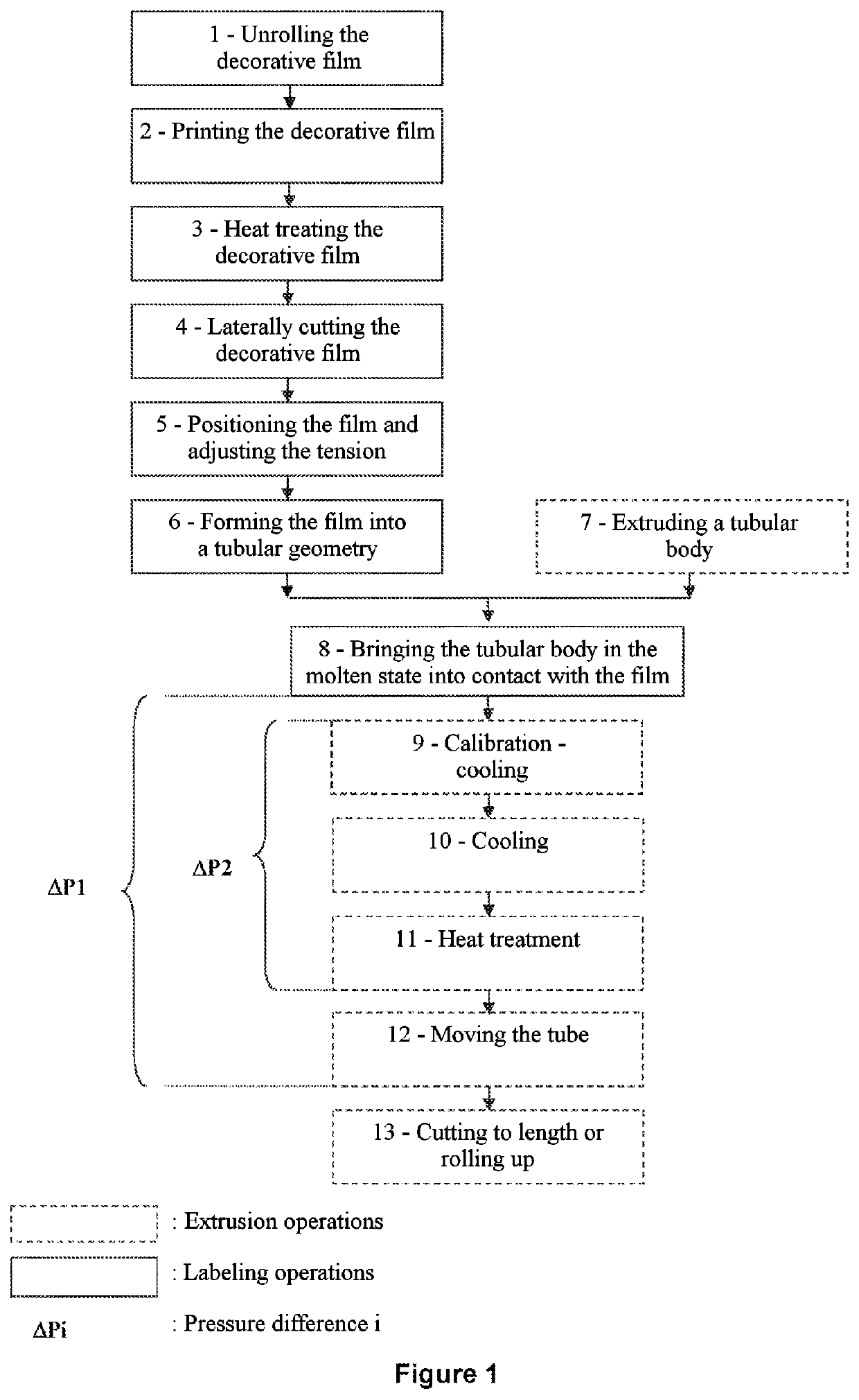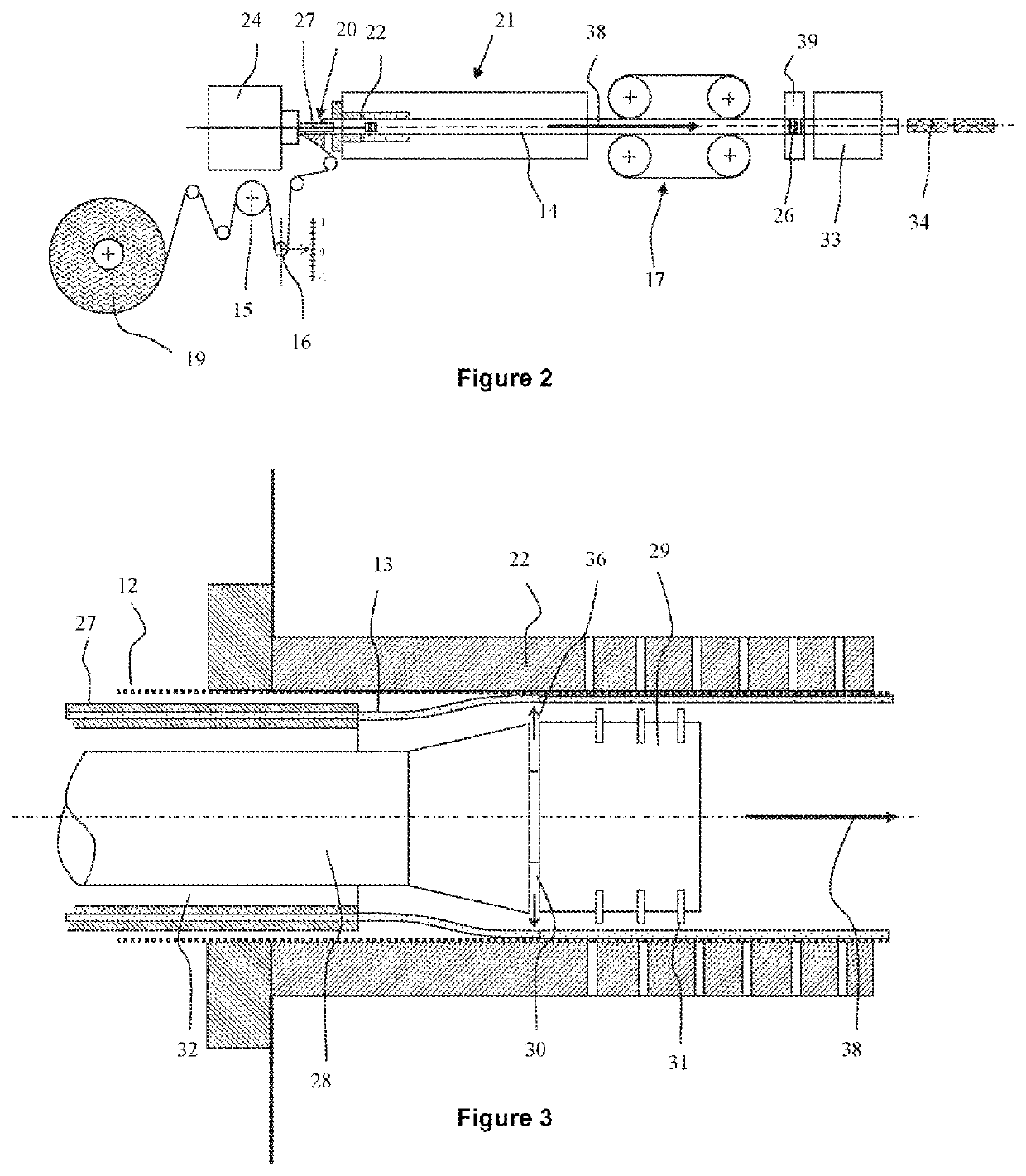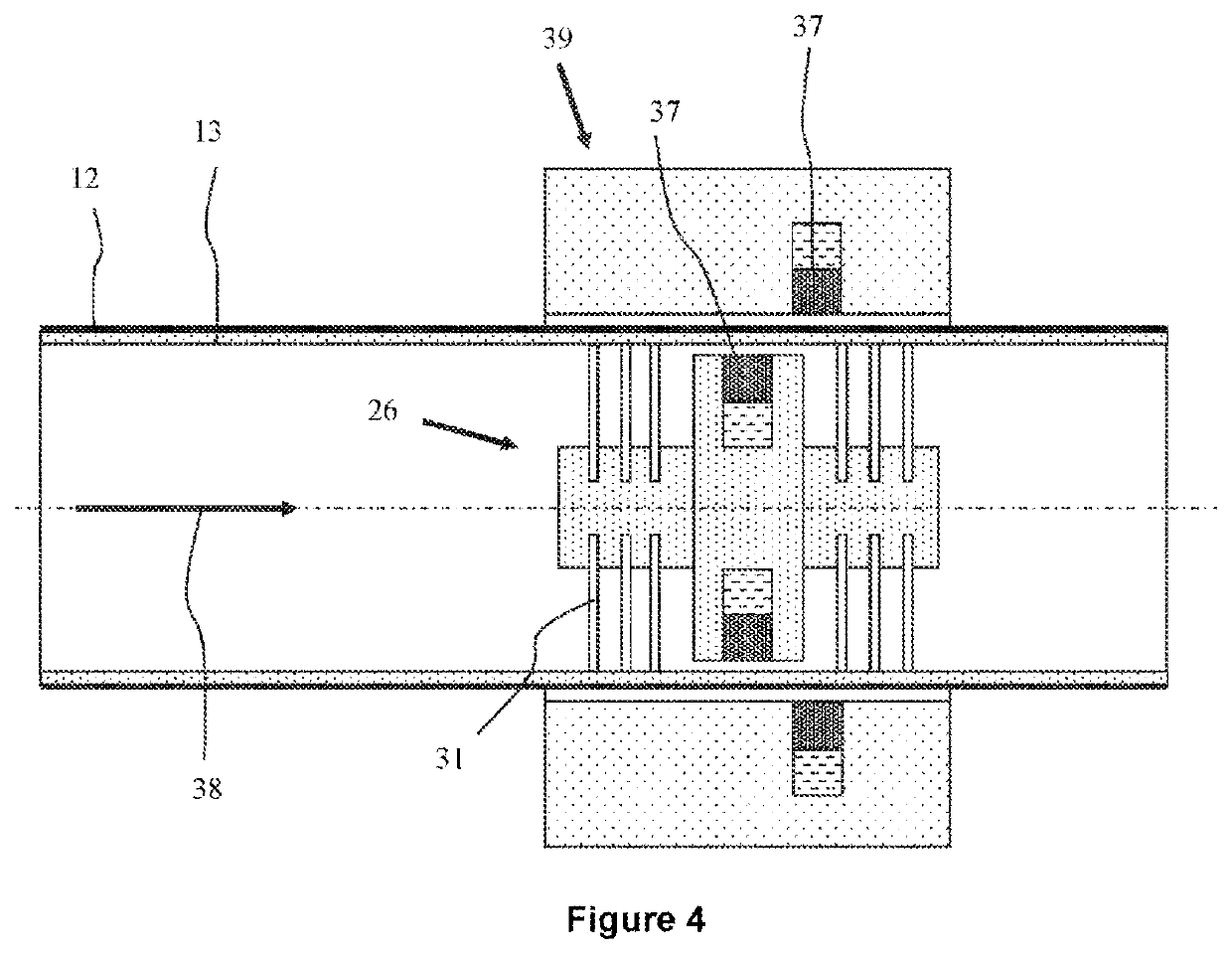Method and device for extruding and labelling a cylindrical product
a technology of cylindrical products and packaging tubes, applied in the direction of coatings, etc., can solve the problems of reduced flexibility of the manufacturing process, reduced production rate, and increased complexity of the process, and achieve the effects of facilitating the extrusion of resin grades, enhancing productivity, and increasing production ra
- Summary
- Abstract
- Description
- Claims
- Application Information
AI Technical Summary
Benefits of technology
Problems solved by technology
Method used
Image
Examples
Embodiment Construction
[0095]FIG. 1 shows one embodiment of the method of the invention in the form of a block diagram representing the steps of the method.
[0096]In a first step (1), a decorative film (that will form the label) is unrolled from a spool, which is the usual method of producing decorative films of this kind for tubes of this kind.
[0097]In the method according to the invention, there follows the second step (2), which may be optional, in which is notably effected an operation of printing the decorative film. The decorative film can be printed using any of the known flat printing methods such as for example (nonlimiting): flexography, screenprinting, heliogravure, typographic printing, offset printing, hot stamping, cold foil, or again digital printing and combinations of these printing technologies. The invention will advantageously be associated with digital printing for productions necessitating flexibility and rapid changes of decoration. The printing may also be covered by a protective va...
PUM
| Property | Measurement | Unit |
|---|---|---|
| melting point | aaaaa | aaaaa |
| diameter | aaaaa | aaaaa |
| temperature | aaaaa | aaaaa |
Abstract
Description
Claims
Application Information
 Login to View More
Login to View More - R&D
- Intellectual Property
- Life Sciences
- Materials
- Tech Scout
- Unparalleled Data Quality
- Higher Quality Content
- 60% Fewer Hallucinations
Browse by: Latest US Patents, China's latest patents, Technical Efficacy Thesaurus, Application Domain, Technology Topic, Popular Technical Reports.
© 2025 PatSnap. All rights reserved.Legal|Privacy policy|Modern Slavery Act Transparency Statement|Sitemap|About US| Contact US: help@patsnap.com



